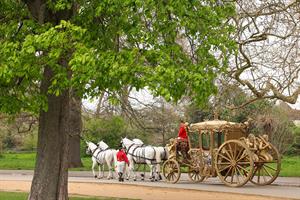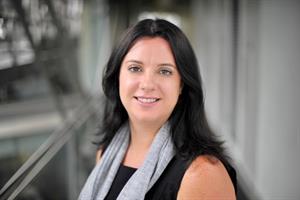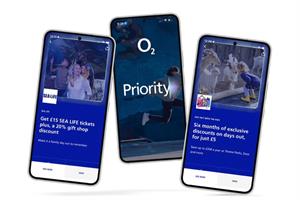

Brand
Marks & Spencer
"Your M&S."
-
Established
1884
-
Number of staff
83,000
-
Head office
London, UK
-
Sector
Retail
Marks & Spencer Clothing and Home "Gifts that give" by House 337
Marks & Spencer Food "Duckie" (in-house)
Marks & Spencer "Eat well, play well" by Marks & Spencer
M&S Food "Percy's first Christmas" by Grey London
M&S "Make the season anything but ordinary" by ODD
Milestones
About Marks & Spencer
Widely considered one of Britain’s national retailing treasures, Marks & Spencer was co-founded in 1884 by a young Russian refugee, who was called Michael Marks. He had arrived in the UK 10 years earlier and set up a ‘penny stall’ in Kirkgate Market in Leeds. When his penny bazaars started to take off, he teamed up with an Englishman, Tom Spencer, a cashier at a wholesale company.
From these humble beginnings, the company has grown into an operation comprising 1332 stores in 59 territories, across Europe, Asia and the Middle East, as well as more than 7m registered users online.
Perhaps it was Spencer’s wholesale background that led to its long heritage of working closely with suppliers and gaining a reputation for sophisticated supply-chain management, on which it continues to pride itself today.
Innovation and pioneering techniques have been key to the company’s success. For instance, in the 1930s, M&S launched a ‘staff welfare service’, recognising early the importance of looking after its employees; around the same time, it set up a scientific lab to experiment with new fabrics. The government even consulted M&S scientists during the Second World War to help with rationing strategy.
Similarly ahead of its time, M&S introduced the first pilot of self-service shopping in the 1940s and, a decade later, rolled out the retailer’s first own-label brand, St Michael.
The 1970s and 1980s were boom years for M&S, with seemingly boundless consumer appetite for the brand. It extended into out-of-town stores, and new product lines were added, from furniture to finance.
A focus on food proved particularly savvy, and led to the brand starting to roll out food-only stores, called Simply Food, in 2001. This trend has continued, with food currently accounting for 57% of the company’s total turnover.
Lingerie remains another strong area for M&S, which sold its first bra in 1926.
However, while M&S has always been held with affection in many shoppers’ hearts, this has not always translated into open wallets. At the end of the 1990s, the brand experienced a particular slump, resulting in its share price falling to a 10-year low. The issue seemed to be that, while the brand had built up a strong reputation for being trustworthy and high quality, it had also become associated with being staid, middle-aged and boring.
In response, M&S began accepting credit cards and revamped its advertising strategy. This led to its landmark, heavyweight ad campaign starring a plus-size model running up a hill shouting “I’m normal”.
Alongside this much-higher profile, column-inch-garnering approach, the brand introduced the ‘Exclusively for Everyone’ tagline, which successfully encapsulates the M&S corporate mission. This marked a new era for the brand, where its advertising, particularly its Christmas TV ads, would become a national talking point; the brand has since become famous for its heavy use of celebrities.
Long before the Instagram age, M&S pioneered the concept of ‘food porn’ with its ‘This is not just food, this is M&S food’ ad campaign. Launched in 2004, one of the early ads in the long-running series, featuring its Melt in the Middle Chocolate Pudding, sent the product’s sales soaring 3000%.
In the same year, the retailer introduced the ‘Your M&S’ positioning to “reflect the unique position M&S holds in British hearts and minds”. Both campaigns, overseen by the then-marketing boss Steven Sharp, proved to be highly successful and were instrumental in the turning around its fortunes.
As well as innovation and inclusivity from the outset, other core values to have guided the brand have included, in its words, “inspiration, integrity and being in touch”.
One facet of being “in touch” is reflected in M&S’ ethical and environmental programme ‘Plan A’, which underpins corporate decisions from responsible sourcing and reducing waste to improving the communities in which it operates. According to M&S, it is a business plan that “maps out our route to providing leadership in a world that is increasingly resource-constrained and experiencing social change”.
Recently about Marks and Spencer
BUSINESS DETAILS
Waterside House, 35 North Wharf Road, London W2 1NW
www.marksandspencer.com
KEY PEOPLE
Patrick Bousquet-Chavanne, executive director marketing and international
Robert Weston, brand and marketing director
Zoe Hayward, head of brand and marketing (food)
Maria Kousoudakis, head of brand and marketing (clothing and home)
Erin Roy, head of digital marketing
















